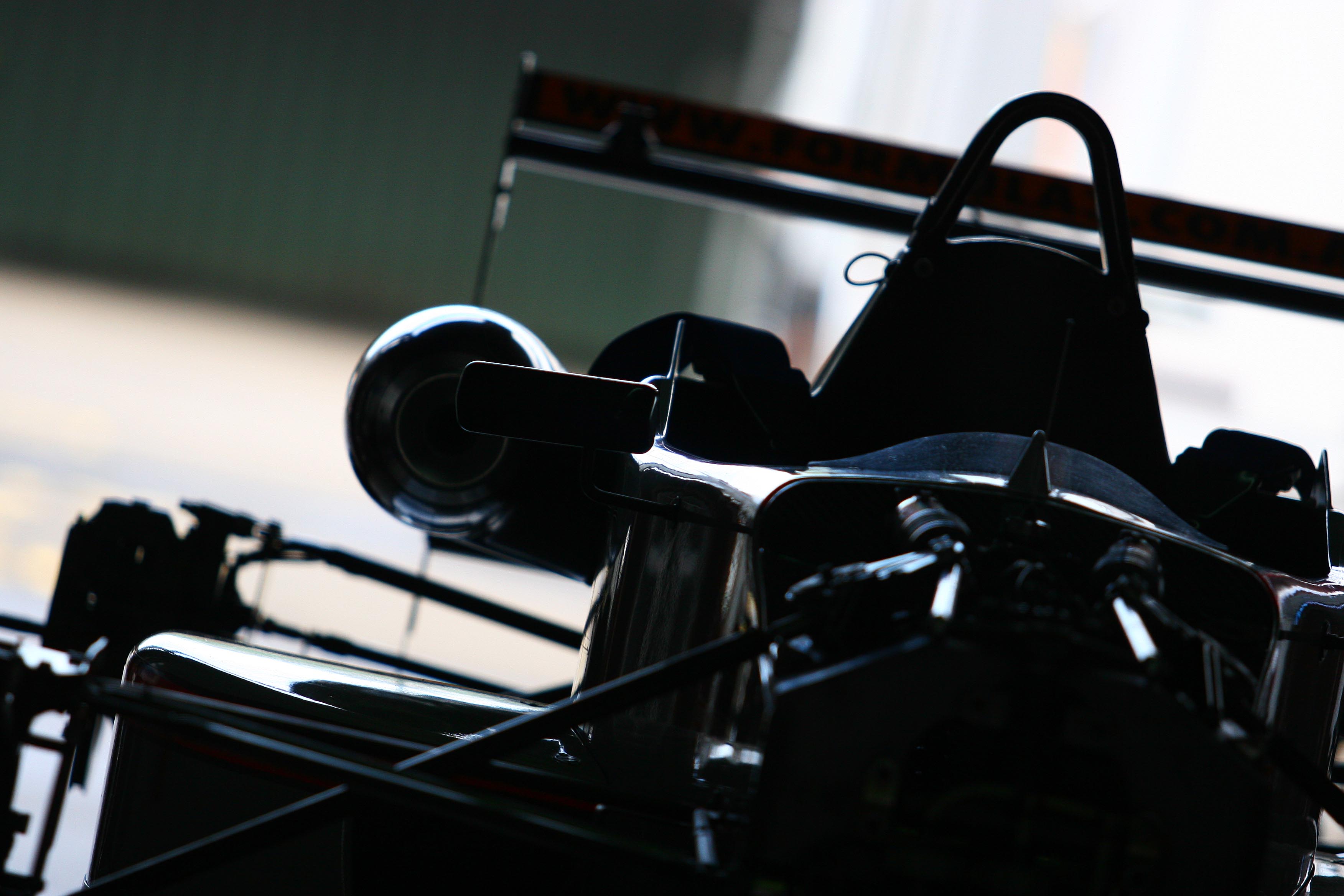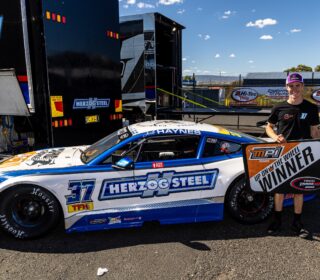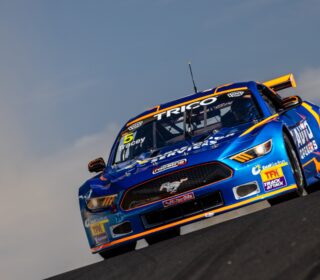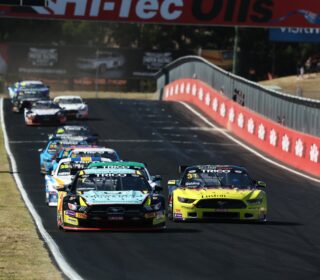THE STATE OF PLAY IN FORMULA 3

THERE is irony in the fact that in trying to clean up their own open-wheel ladder system to Formula One, the FIA has made a jumbled mess of one of the sports most iconic categories.
To give an example of the state of confusion in which Formula 3 presently sits, we need to start at the beginning.
First utilised as a brand by the FIA in 1950, F3 has traditionally been a key step on the junior open wheel pathway and in more recent years has been the first true experience of drivers to experience a car with serious aerodynamics and performance.
The series grew and evolved into what in the late 1990s and 2000s was a series category recognised by Formula One teams and, on occasion, a direct feeder to the main game.
With regulations that allowed for chassis development, not to mention multiple brands (though Dallara has been the mainstay of the class since the introduction of the ‘F393’ generation chassis) and engines competing head-to-head, the category was a hotbed of competition across Europe with the F3 Euro Series and the British F3 International Championship the pinnacle categories – leading into the end of season Macau Grand Prix.
Strong regional or domestic championships popped up around the world. Japanese F3 was, and remains, hugely competitive and enjoyed manufacturer support from TOMS Toyota and Nissan / NISMO. Asia had a regional series for several years in the early 2000s, and Australian F3 was formed in 1999 and truly prospered for several years, with the 2003-2011 era generally seen as local F3 at its best.
However, lately shifts in the structure of the sport has seen the F3 brand diluted and next year, splintered into various different classes with different types of cars.
So, here’s a rundown of what we are likely to have as ‘Formula 3’ next year.. you may want to take notes.
FIA Formula 3 will ditch the current chassis and engine package – essentially the uninterrupted evolution of Formula 3 since adopting the two-litre, air-restricted formula in 1974 – and will assume GP3s position on the Formula One support program.
The cars will be a new chassis mated to the V6 power plant and drive line used by the current GP3 series and will complete the FIA’s goal of having a MotoGP style progression of F3 to F2 to F1 on their premier program. This, in isolation, makes sense.
What is currently the FIA Formula 3 European Championship will be disbanded, though there’s a good chance those cars will continue onwards.
DTM promoter, ITR, is working with F3 organisers to revive the F3 EuroSeries, using the current chassis and engine package which remains FIA homologated until the end of 2019.
According to Autosport, the series has plans to then introduce a new chassis in 2020 – possibly in conjunction with Japanese Formula 3, which will continue under the current F3 regulations.
So that’s pretty simple, on the outset. FIA Formula 3, F3 EuroSeries. Great.
However, whereas international Formula 3 used to also be the base for the various domestic and regional categories, that is no longer the case.
A new ‘Regional F3‘ category has been created by the FIA to fill the gap between domestic Formula 4 classes and the big-boy F3 cars that will race on the Formula One program.
These cars, like F4, will be built by a variety of chassis manufacturers and powered by a controlled engine – turbocharged – by an anointed supplier in any given country. The USA, surprisingly, was the first to adopt the new ‘Regional F3’ regulations and run a Crawford / Ligier chassis (by Onroak – it’s the same tub we will use for S5000 in Australia) powered by a turbocharged Honda engine.
A new Asian series started this year with a chassis provided by Tatuus and a spec-engine currently runnining without manufacturer branding.
The US series has not been a success – just five drivers have scored points in the first several rounds – and is yet to crack double figures, while the Asian series started strongly not long ago with 18 cars, though dropped to 12 at round two. Early days, of course.
The next step is Renault planning to ditch their Formula Renault Eurocup series in 2019 and instead adopt the Regional F3 formula.
According to Autosport, the series may well use the ‘F3 by Renault’ brand with chassis plans currently fluid, though Tatuus currently provide the Formula Renault cars.
Riding into the equation now, then, is the BRDC British Formula 3 Championship – which is basically F3 in name only.
The BRDC’s series evolved out of the strange scenario of Great Britain enjoying two Formula 4 Championships – one operated by MSV (Motorsport Vision, Jonathan Palmer’s company that operates several key British tracks) and the other by the BRDC, owners of Silverstone.
This nonsense was settled in 2016 when the FIA agreed to the re-naming of the BRDC’s series to “British Formula 3”, reviving the otherwise dead brand that in the 1990s and 2000s had arguably been the peak junior category in the world.
BRDC F3 essentially uses the Tatuus Formula 4 chassis with a Ford engine uprated for more performance to get the cars closer to real F3 pace and separate them from the other Formula 4 category.
Reports are that the BRDC F3 Championship is investigating a switch to the FIA’s ‘Regional F3’ rules next year which would make sense.
Confused yet? It gets better.
Next up we’ve got the EuroFormula Open Championship, which evolved out of the domestic Spanish F3 Championship.
Spanish F3 was originally a strong domestic arm of F3 which used the same chassis regs as the British and EuroSeries, but a control Toyota powerplant to save costs.
The series re-branded to ‘EuroFormula Open’ in 2014 after the FIA got all flighty about who got to use the ‘F3’ brand.
Adding to the ‘everyone gets an F3’ model 2019 is shaping up to be, EuroFormula, which enjoys the support of key teams including Carlin, Fortec and Campos Racing and races across much of continental Europe and the UK, will allow in the current VW and Mercedes-Benz engines competing in FIA Formula 3 into the series next year alongside their existing engines.
Of course, there’s also various other Formula 3 series around, using the existing cars – including one in the UK and the Australian Formula 3 Premier Series which now runs almost exclusively on the Australian Motor Racing Series (AMRS) program and state-level events.
So, imagine you’re a young driver and working the pathway to F1.
While the F4-F3-F2-F1 ladder makes sense in theory and looks nice on paper, it’s not actually as easy as that.
You start in Karting and perhaps Formula Ford and then jump into Formula 4, where you succeed – but then the options get tricky. You could contest a club F3 championship to learn how to drive the cars, or tackle a ‘Regional F3′ category which is still in its formative years and yet to prove itself to be a valuable step on the ladder. You could go and tackle the BRDC F3 Championship, which has some cache’ but isn’t really F3 at the moment, or you could go and get miles in the more serious cars in Japanese F3 or EuroFormula Open.
Or you could dive straight into the new FIA Formula 3, which will be on the F1 program, though it’s doubtful that you’ll have the Super License points to do so.
After that it’s into F2 and F1. Simple as that.. or you could go and race SuperFormula in Japan first.
Alternatively, you could head to the ‘States and get on the Road to Indy, which offers a genuine scholarship between their USF2000, ProMazda and IndyLights levels. And if you win Lights you get US$1m towards three IndyCar rounds the next year, including the ‘500.
That system is not perfect – they’ve lost Mazda after this year and IndyLights battled with eight cars this year – but it’s a hell of a lot clearer a pathway than the muddled mess that the step between junior and top-flight open wheel categories Europe will enjoy next year.
WORDS: Richard Craill
PHOTO: TheRaceTorque.com Archive







